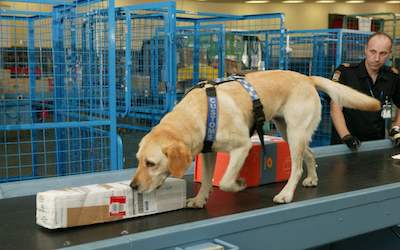PTE考生目前最大的问题之一就是练习题缺乏。除了有限的基本官方书(PLUS,Testbuilder, OG)之外就没有题了。很多英语基础不是很扎实的同学很难找到练习材料。悉尼文波雅思PTE培训学校专门为澳洲,尤其是悉尼、墨尔本的PTE考生准备了适合PTE听力阅读练习的科学60秒。各位PTE同学可以练习PTE听力中的summarise spoken text和PTE口语中的retell lecture,PTE听力口语-科学60秒-Frosty Moss练习记笔记技巧和复述。废话少说,下面开始:
听力内容:
60秒科学节目(SSS)是科学美国人网站的一套广播栏目,英文名称:Scientific American – 60 Second Science,节目内容以科学报道为主,节目仅一分钟的时间,主要对当今的科学技术新发展作以简明、通俗的介绍,对于科学的发展如何影响人们的生活环境、健康状况及科学技术,提供了大量简明易懂的阐释。
This is Scientific American — 60-Second Science. I’m Christopher Intagliata.
Old Yeller was a great smeller. Dogs in general have superior smelling abilities. They detect dead bodies, illegal drugs and explosives—even cancer. But dogs don’t just have great olfactory gear. Another reason they’re amazing chemical detectors? [sniffing sound]… is the sniff.
“And it turns out almost every breed of dog does this at 5 Hz. Five times a second.” Matthew Staymates, a mechanical engineer and fluid dynamicist at the National Institute of Standards and Technology. Sniffing, he says, is really a two-part process. “Inspiration, expiration, right? Inhale, exhale, inhale, exhale.” That second part, the exhale, is key.
“So when the dog is actively sampling or sniffing on the ground, there is a turbulent air jet that exits each nostril during the exhale phase. Just like when you and I exhale there’s an air jet that comes out of our nostrils. But the dog is down on the ground and those air jets are vectored down and toward its rear. And in the world of fluid dynamics, if I pulse an air jet in one direction I basically pull air with it.” So the dog is creating a pressure differential that effectively pulls new scents toward its nose.
Staymates and his colleagues discovered that effect using a 3-D–printed model of a Labrador retriever’s nose, which they tested with fluid dynamics equipment. They then outfitted a commercial vapor detector with sniffing nostrils, inspired by the dog nose. And they found that the actively sniffing detector was 16 times better at picking up the scent of explosives, compared to just continuously drawing in air—whick is the usual method. The results are in the journal Scientific Reports.
Staymates says he hopes next-generation sensors take sniffing seriously. “There’s nanosensors out there that can detect very, very small amounts of materials. One of the things that’s been overlooked: is how do you get the molecules of interest to the detector, right? So you can have the most sophisticated detector in the world, but unless you can get material to it, it’s not very useful.” Adding a sniffer though…could be just the thing to make those detectors more dogged.
Thanks for listening for Scientific American — 60-Second Science Science. I’m Christopher Intagliata.
墨尔本悉尼文波PTE原创首发
更多精彩请持续关注微信wenbo_tv3。





